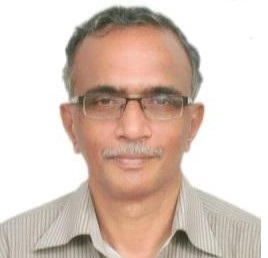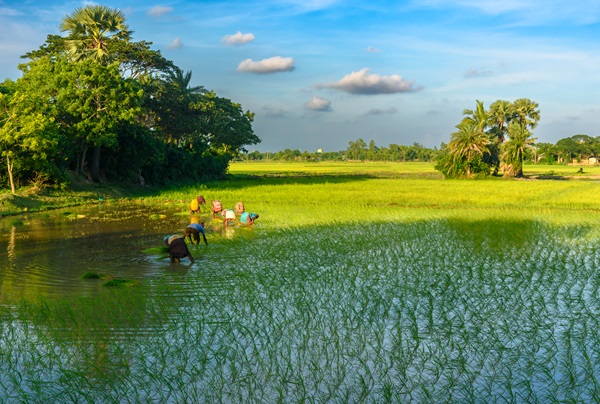.png)

Dr K L Prasad, retired Principal Adviser, Agriculture Ministry, served 36 years in Indian Economic Service from grassroots to policy level
August 11, 2025 at 2:41 PM IST
US President Donald Trump’s use of reciprocal tariffs as a tool to narrow the trade deficit poses a tough policy challenge for many countries today. It gets tougher for India, as a 50% tariff is akin to an external economic shock.
India’s economic resilience may help it tide over this shock if negotiations fail, but it is also an opportunity to review the country’s complex maze of non-tariff measures, tariff-rate structures, and import processes. Still, negotiating WTO-bound agricultural product tariffs and market access under such duress is inadvisable.
Tariff concessions should follow a comprehensive assessment. Cross-country comparisons of agricultural competitiveness are inherently too complex to be decided on the basis of a few metrics and are often misleading in the presence of large-scale subsidies worldwide. True global competitiveness depends on factor and resource endowments, scale of production, productivity gains, costs, and relative exchange rate movements.
The US is using reciprocal tariffs as a negotiating strategy to extract concessions, including agricultural market access. As in any negotiation, there is scope for some give and take. India’s strategy should clearly distinguish between its national interest and its stated negotiating position. Many advanced economies strictly restrict labour mobility and outsourcing to protect domestic employment, yet they demand that emerging economies open up all sectors, including agriculture, despite the unequal nature of such demands.
India’s policy of agricultural self-sufficiency and high tariff barriers flows from the experience of dependence on food imports from the US under Public Law 480 in the 1950s. Before the economic reforms of the 1990s, India was foreign-exchange constrained and its policies were largely autarkic. Since then, customs tariffs have been simplified and reduced substantially.
The Union Budget for 2007-08 committed to progressively reduce non-agricultural tariffs to ASEAN levels, with peak non-agricultural duties cut to 10%. Nevertheless, the Indian Customs Tariff Schedule remains complex. Basic customs duty constitutes tariff protection, while other additional duties are levied to ensure a level playing field. However, significant discretionary powers are left with authorities, which creates uncertainty for trade.
As with other emerging economies, India maintains a wide gap between its WTO-bound rates and applied rates. In 2024, the WTO-bound rates for India were 113.1% for agriculture and 36% for non-agriculture, resulting in an overall bound tariff of 50.8%. By contrast, the most-favoured-nation simple average applied rates were 36.7% for agriculture, 13.0% for non-agriculture, and 16.2% overall. In agriculture, 65.1% of tariff lines are in the 25–50% category, and only 13.2% are higher.
As part of the negotiations based on India’s stated position, there may be scope for further lowering tariffs on a case-by-case basis. In several non-agricultural sub-sectors, India’s global competitiveness outcomes have been mixed. For instance, India has gained, albeit not as much as expected, in textiles and clothing since the quota regime ended in 2005, while some other nations have performed better.
In agriculture, many countries also have high bound rates. Any change needs to be studied for its likely impact on both economic and geopolitical considerations in the long term. Despite high tariffs on edible oils, the oilseeds sector in India has not been able to compete, and now there is a large import dependence. In general, the average landholding size, agro-climatic conditions, levels of mechanisation, productivity, value added, and value of output per hectare in India are not directly comparable to those of advanced economies.
Typically, an Indian farmer owns about a hectare of land. An average farmer with a wheat-and-rice crop mix in India gets ₹85,000 per hectare annually, which is about one-half of the average annual per capita income. Punjab farmers, with the highest productivity in paddy and the second-highest productivity in wheat, get ₹158,000 per hectare, which is also lower than the average annual per capita income.
In most other crops, average returns are much lower. Large parts of agricultural production remain labour-intensive. Given the current trend, consolidation of landholdings and scaling up are not likely. Thus, for an Indian farmer to compete with mechanised large-farm output processes, a certain level of protection is needed.
In terms of livelihoods and employment, the agriculture sector has the largest share, and that cannot be absorbed elsewhere quickly. Assessments of competitiveness based on current global prices may be misleading, as only a fraction of agricultural output is traded globally, and any opening up may create excess supply conditions, further lowering returns to crop farming. Increasing productivity through genetically modified crops may reduce the yield gap with the world somewhat, but it is a decision best left to agricultural scientists.
First, yield gaps within India need to be reduced. The external value of the rupee is largely disconnected from production and trade. It partly reflects India’s limited intermediate resource endowments and is heavily influenced by asset prices in the financial sector. Combined with a relative lack of ease in doing business, this is a drag on overall competitiveness.
This does not imply that crop agriculture needs to be protected indefinitely by tariffs. India is already in the process of reducing tariffs on pulses and oilseeds, as consumer interests ultimately prevail. But these are ad hoc measures.
There is scope for durably reducing effective rates of tariffs in a number of agricultural items, based on a comprehensive reassessment of competitiveness, domestic production shortfall, and the relative abilities of the agriculture sector elsewhere.
In terms of market access for agriculture and allied sectors like dairy, many political and strategic considerations need to be analysed before opening up. Farmers are adaptable to changes if domestic prices and returns are right. Politics aside, reforms will find broader acceptance.




